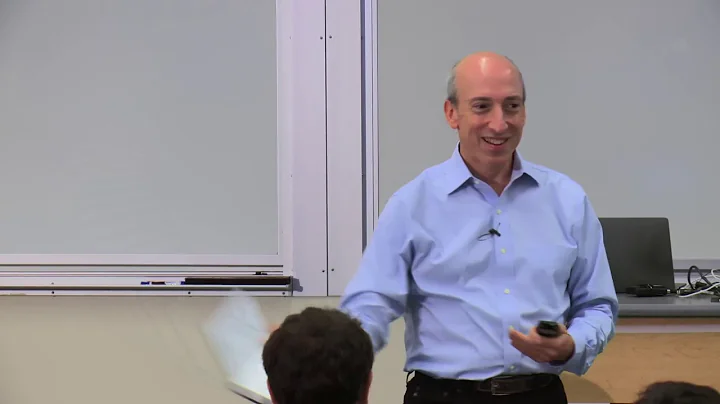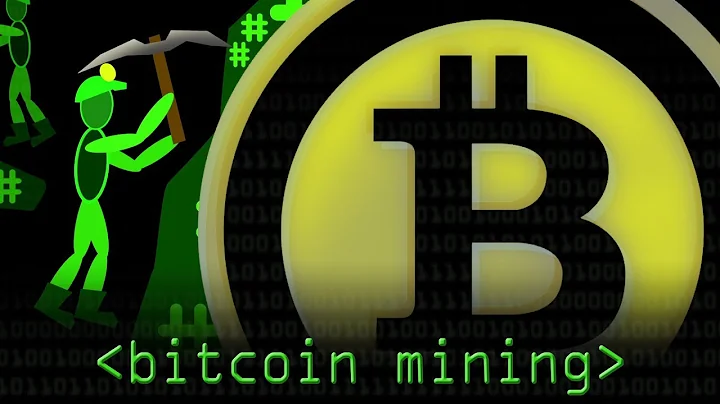How Bitcoin comes from is very simple: either you mine it yourself, or someone else transfers it to you. Of course, the earliest source of what others transfer to you is also from mining income. Therefore, in this issue we first talk about mining, which is an initial allocation of Bitcoin.
In the mining part, we mainly involve two knowledge points: hashing and proof of work.
1. What is mining going on?
The earliest 50 Bitcoins were mined by Satoshi Nakamoto and . We often say now: Bitcoin is generated by mining. Mining is actually a metaphor, and its meaning can be understood as solving a super difficult and complex mathematical problem.
Because this problem-solving process is a bit as difficult as mining mineral resources, and at the same time, it consumes a lot of electricity, so this problem-solving process is called "mining". So what about the people involved in solving the problem? , known as "miners".

Bitcoin's first block was created by Satoshi Nakamoto. According to the settings of the Bitcoin system, he created the first block and could get 50 Bitcoins as a reward. It can be said that Satoshi Nakamoto Was the first miner of Bitcoin.
According to the settings of the Bitcoin system, the number of Bitcoins is constant at 21 million and is halved every four years. In 2009, the reward for mining by Satoshi Nakamoto was 50 Bitcoins. Nearly 10 years have passed and Bitcoin has experienced two halvings, from 50, to 25, and then to 12.5. Therefore, now mining Mining, that is, the reward for creating a block is 12.5 Bitcoins.

Some people may ask, if Bitcoin is halved every four years, won’t the Bitcoin rewards earned by miners become less and less? What gives them the motivation to keep mining? In fact, the rewards miners receive are not only mining income, but also handling fees.
When you transfer Bitcoin between you and others, you have to pay a certain fee to the miners. Of course, the handling fee is voluntary, you can pay as much as you are willing to pay. Is it okay not to give it? Yes, but miners will choose transactions with high handling fees to be processed first. If you don't pay handling fees, your transactions may be queued at the back.
Now, whether you conduct Bitcoin transactions through a trading platform or wallet software, the proportion of handling fees is a relatively reasonable handling fee automatically generated by the trading platform and wallet based on your account situation. This step does not require you to do it yourself. What additional operations are performed, so everyone may not feel the existence of the handling fee paid to the miners.

Is it easy for miners to get generous mining rewards and transaction fees? It is not easy, and their labor has a cost. Don’t underestimate their cost. The cost is very large, and the biggest cost is the electricity bill.
2. Hash operation and hash value
As we just said, mining is actually solving a super difficult and super complex mathematical problem. This problem-solving method is through "hash operation", and the solution to the problem is " Hash value". What is the hash operation of
? To put it simply, "hash operation" means packaging transaction information (all information including timestamps) and "coding" all this information to perform complex calculations and obtain a hash value.
"Hash" is a cryptographic concept, but we can understand it as an mathematical function question. However, it is slightly different from the mathematical function problem: x and y in the mathematical function problem are two-way. If x is known, y can be found, and if y is known, x can be found. However, the hash function is one-way. You can find y if you know x, but you can't find x if you know y. Why does

use a "hash function"? This is related to the security of the Bitcoin system. The Bitcoin system is a huge, constantly updated ledger. This "ledger" is open to the entire network. This involves the issue of personal information leakage. The "one-way" nature of the
hash function can ensure the information privacy and security of the account subject: you know my transaction information, but you don't know who I am, and you can't find my information. The "one-way nature" of the hash function gives Bitcoin good anonymity, which is why Bitcoin is favored for transactions on the dark web.
Using "hash functions" to protect privacy is a good way, but the process of calculating hash values is actually very, very difficult. Moreover, for Bitcoin, it will become increasingly difficult as the Bitcoin production is halved every four years. How difficult is
? There is no fixed algorithm for this hash value. It can only rely on the computer to randomly perform hash collisions. If the collision is correct, the answer is correct.
So, mining requires very high computer computing power, that is, computing power and . The key to mining is actually computing power. Some people may ask: I want to mine, but I don’t know how to hash, how should I mine? Some people may also be wondering: Calculating hashes is obviously a mental job? Why is the biggest cost said to be electricity?
The earliest "mining" did require calculations and mental work, but now, computers (that is, our home computers) are no longer used for mining, but professional mining machines are used for mining. The emergence and development of professional mining machines has made up for the shortcomings of low computing power of home computers, and has also saved us mental labor, making mining very easy.
For professional mining machines, we only need a very simple installation to mine. As for the process of calculating hashes, professional mining machine chips will help you complete it. The mainstream chip now is ASIC, and both Antminer and Avalon mining machines on the market use ASIC chips.
Therefore, for mining, the cost you have to pay is the mining machine fee and electricity fee. You don’t even need to buy a mining machine, because there are many mines now, which are places that specialize in maintaining mining machines. You can rent the computing power of the mining machines in the mines to mine.

The current mainstream mining machine has a calculation level of about 13.5T, which means that it can perform 13.5 trillion calculations per second, which means it can do 13.5 trillion hash collisions per second. This amount is astonishing, right? You can imagine how high the electricity consumption is. These electricity fees constitute the main cost of mining for miners.
just checked. With the current market situation, it is difficult to make back the investment after buying a mining machine for mining for one year. Because electricity costs are too high, many mines are now established in places where electricity is very cheap. Our country's mines are mainly located in Sichuan and Inner Mongolia.
According to the regulations of the Bitcoin system, a block is added every 10 minutes. The content in the block is some transactions that occurred in the system in the past 10 minutes. Therefore, the mining time of the miners is about 10 minutes. In the early days of
, when there were no mining machines, miners needed to monitor the network at all times. Once a transaction was broadcast on the network, they needed to use their computers to perform a large number of hash operations within 10 minutes. Until someone is the first to calculate the correct hash value, he has the right to record the transaction, that is, the right to create a block, receive Bitcoin rewards, and transaction fee rewards, declaring mining successful.
Now, with professional mining machines, mining machines can replace miners and achieve the effect of "always monitoring the network and doing a lot of hash calculations".

3. Proof of Work Mechanism (PoW)
The whole set of hash calculation work we mentioned above is called "Proof of Work", the English abbreviation of PoW.
Under the workload proof mechanism (PoW), the entire network has reached a consensus, which is a rule that everyone agrees with. This rule (consensus) is:
proves that it has completed a certain task by solving the "hash function" Based on the amount of work, whoever can complete the work quickly and accurately and answer the correct hash value will gain the power to record transactions (accounting), and then receive Bitcoin rewards.
So we say that the "proof of work mechanism" (PoW) means more work, more gain, less work, less gain. The more work you put in, the greater the probability you will get Bitcoin rewards. From this perspective, the "proof of work mechanism" (PoW) can be regarded as the incentive mechanism of the Bitcoin system.





















